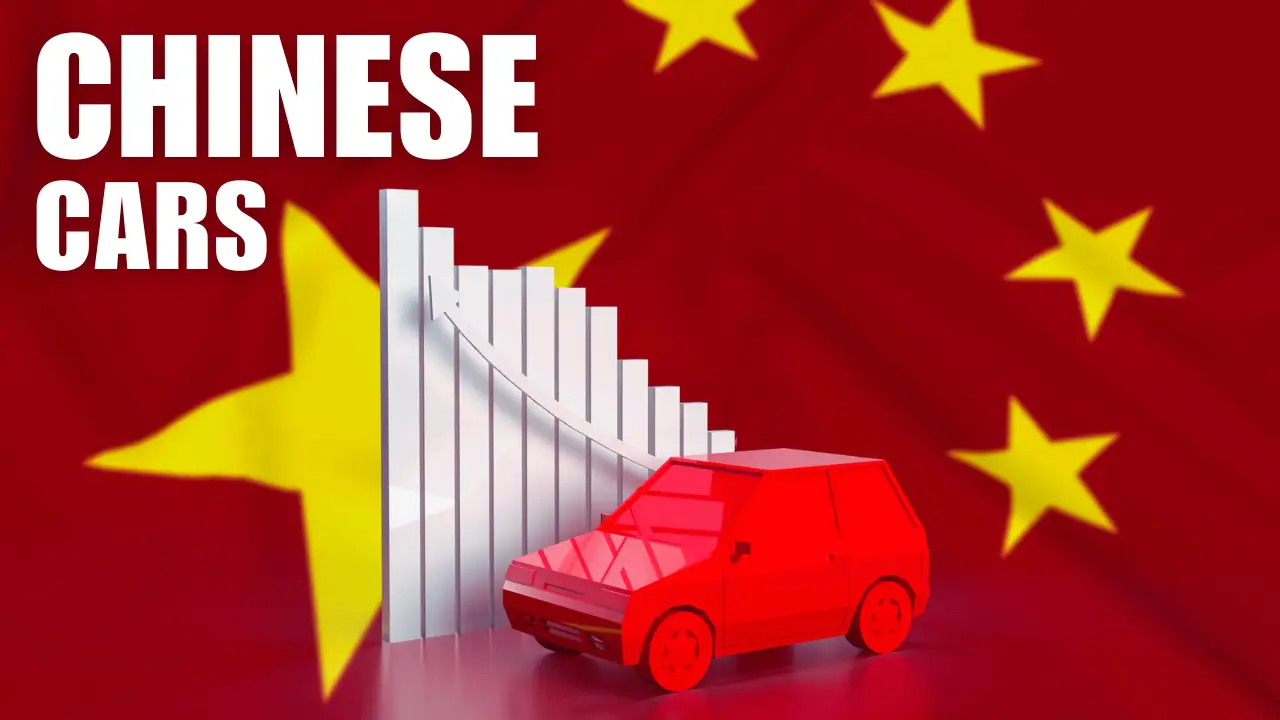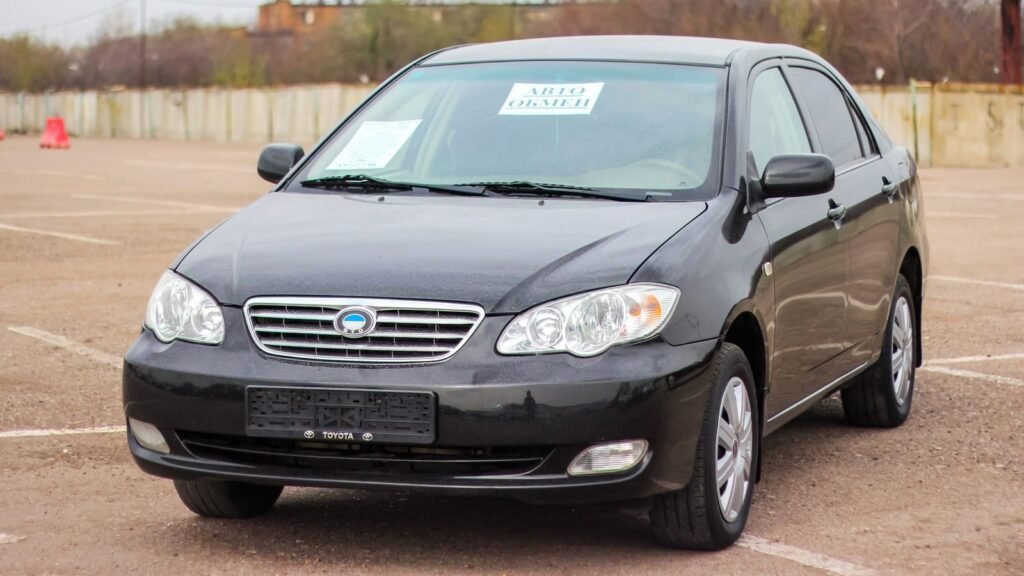
First generation of BYD’s F3 was one of the notable copycats of Chinese manufacturers, it looked kinda like a Toyota Corolla from the front and a Honda City from the back
This mix of eye-catching designs, packed features, low prices, and solid warranties has pulled in millions of new buyers, both in China and beyond. These buyers are all about looks, tech, and getting a quick deal rather than worrying about how long the car will last or its resale value. It seems like they make up a big chunk of today’s car buyers.
The copycat stigma: how it started
In the 2000s and early 2010s, dozens of Chinese cars carried very obvious visual similarities to Western models. Stories in major outlets documented striking resemblances — from hatchbacks that looked like Volkswagens to SUVs with BMW-style grilles — and those comparisons produced a global “copycat” narrative that stuck in media and consumer lore. Business Insider and others reported on manufacturers who used heavily derivative designs, which reinforced concerns about intellectual property, engineering depth, and long-term durability.
That early era wasn’t pure malice — it was fast industrial mimicry. The Chinese car industry was a latecomer that needed to scale production and learn fast; copying visible design cues was a low-cost way to offer customers familiar-looking cars while parts- and manufacturing know-how matured.
Famous cases & models
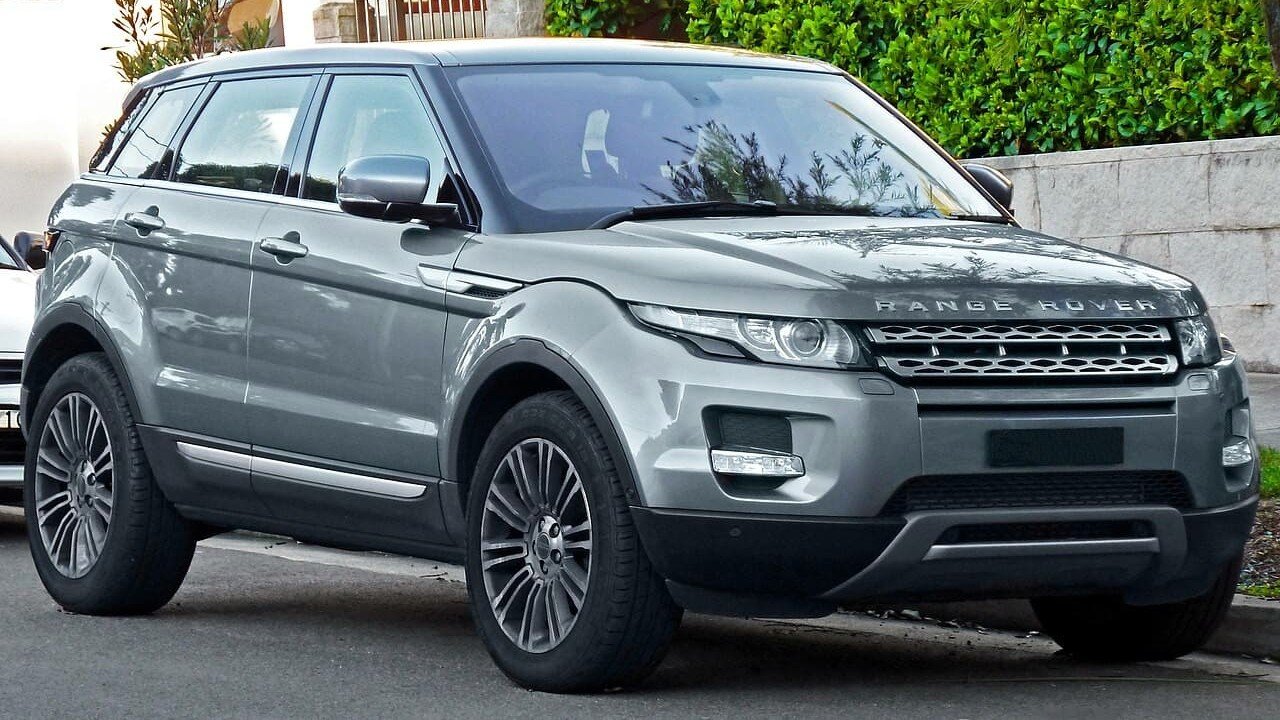
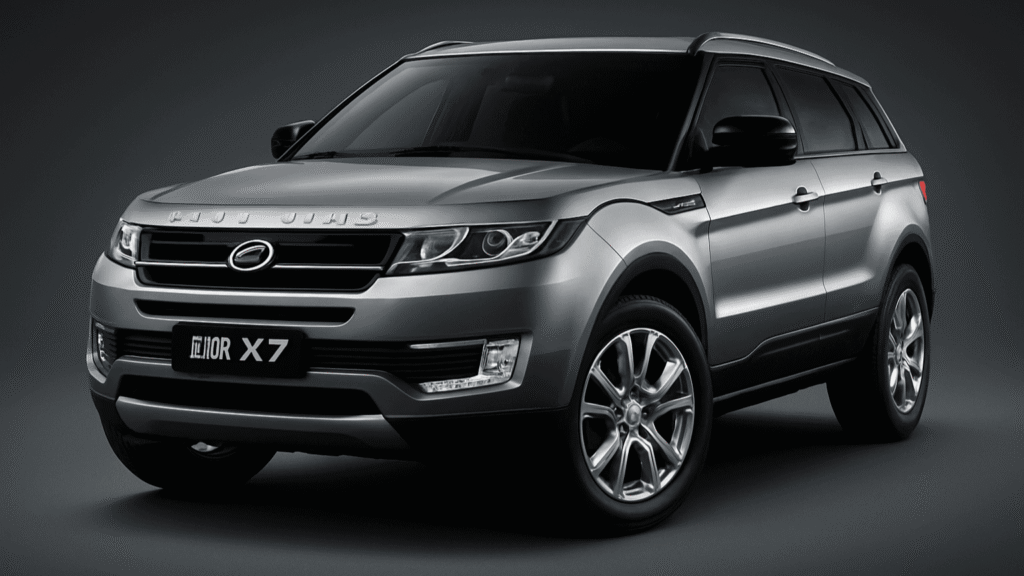
- Landwind X7 vs. Range Rover Evoque
This is perhaps the canonical example. The Landwind X7 launched in 2015 bore a striking resemblance to the Evoque. After years of legal wrangling, a Beijing court in 2019 ruled in favor of Jaguar Land Rover, finding that Landwind had copied five unique design elements. - Shuanghuan SCEO / “CEO”
This SUV combined styling cues: the front looked like the Toyota Land Cruiser Prado, the rear echoing a BMW X5, and the sides a BMW X3. BMW successfully got it banned from sale in Germany. - Chery QQ vs. Daewoo Matiz
Chery’s first gen QQ resembled Daewoo Matiz so closely that GM (then owning Daewoo) alleged parts were interchangeable. - Great Wall & “Panda clones”
Great Wall’s Peri model was accused of being too close to the Fiat Panda in Europe, leading to import bans in Italy and restrictions in other jurisdictions.
But the copycat era had two important consequences:
- It made global buyers skeptical about build quality, safety and durability.
- It forced Chinese automakers to ask: how can we own design and stop being imitated?
That question led to the investments and acquisitions that followed.
The Pivot: Why the Copying Era is Fading
Rising domestic pushback & IP awareness
Chinese consumers started to poke fun at obvious knock-offs. On top of that, local car makers are actually suing each other now. Like in 2023, Changan took Geely to court over issues with design copying. This shows that homegrown brands in China are starting to care about their own look and identity. Plus, the Chinese government is stepping up its game by improving laws around intellectual property to push more for creativity instead of just copying.
What also helped move past the copying phase is that big names in car design like Audi and BMW are teaming up with Chinese companies. Plus, some Chinese automakers are setting up global design studios like BYD’s global design center to compete not just in China but all around the world.
EV disruption: Clean sheet design becomes more feasible
Another main reason the copying phase is coming to an end is that Chinese makers used to mimic traditional gas cars. Those cars needed petrol engines and gearboxes which take years to master and the Chinese didn’t have that kind of experience back then. It felt like they were just following in the footsteps of those who were already successful to get similar results. But now that they’re shifting to electric vehicles, they have much more freedom and fewer mechanical restrictions. Plus, people who buy EVs are looking for different things than those who buy regular cars. They care more about features, how long the battery lasts, and how tech-savvy the car is, instead of just the brand name. So, copying gas car designs isn’t really what people want anymore. On top of that, brands like NIO, XPeng, Li Auto, and BYD are rolling out fresh, cool designs that are really shaking things up on a global scale. Now they can definitely set some new trends in car design.
The turning point: acquisitions, talent, and design centers abroad
Around 2010–2015 a strategic pivot started to show. Chinese groups began buying foreign brands (or stakes), setting up European design centers, and hiring experienced western designers. The headline example: Geely’s 2010 acquisition of Volvo Cars, a move that wasn’t just financial but institutional — giving Geely access to Volvo’s engineering, safety culture and design processes. Reuters covered that acquisition as a signal the industry had matured.
Beyond corporate M&A, individual hires and design hub creation mattered. NIO — one of China’s first EV premium start-ups — established design outposts in Europe; their company blog describes how they built a Munich/Gothenburg connection to attract European designers early in the brand’s life. That kind of recruitment brought tacit design expertise inside Chinese OEMs.
By the late 2010s and early 2020s, China’s EV startups began aggressively hiring designers and engineers from Audi, BMW and Mercedes, while established groups (Geely, SAIC, BYD, Great Wall) consolidated in-house design teams spanning Gothenburg, London, Munich and Shanghai. Reuters reporting shows Geely and others building design and R&D centers in Europe to access talent and marry local tastes to Chinese scale.
The result: after a decade of hiring and cross-pollination, the new wave of Chinese cars no longer looked like immediate clones. They arrived with original proportions, dramatic light signatures, and interiors that leaned heavily on minimalism, ambient lighting, and large displays — visual cues associated with premium marques.
Platformization, batteries and vertical integration — the technical backbone
Style without substance is easily exposed. Chinese OEMs knew that. So while they invested in design, they simultaneously built technical competence — but did it the Chinese way: fast, vertically integrated, and platformized.
Two core pillars enabled the design leap:
1) EV-first platforms. BYD’s e-platform 3.0 is a good example: a dedicated EV architecture that integrates battery, structural design, electrical architecture and software to produce vehicles with low floors, novel proportions and safety structures optimized for battery packs. BYD positioned this as both a technical and aesthetic pivot for its lineup. BYD documents the e-platform 3.0 publicly; it’s a platform designed to maximize packaging efficiency and accelerate model development.
2) Home-grown battery and cells. China’s battery champions — CATL and BYD (which manufactures its own cells and the Blade battery) — unpacked a huge advantage. Vertical control of battery production allowed aggressive pricing and design freedom: you can design a car around the pack rather than shoehorning batteries into ICE chassis. Reuters has profiled CATL’s progress on new chemistries and BYD’s scale.
On top of that, Chinese makers built massive in-house suppliers for interiors, displays, e-architectures and telematics — a level of vertical integration that reduced bill-of-materials cost and shortened the iteration cycle from years to months. Bloomberg and Reuters investigations have documented how this speed and integration let companies like BYD and Chery iterate quickly and undercut global competitors on price.
The stylistic playbook: how Chinese cars learned to look “premium” fast
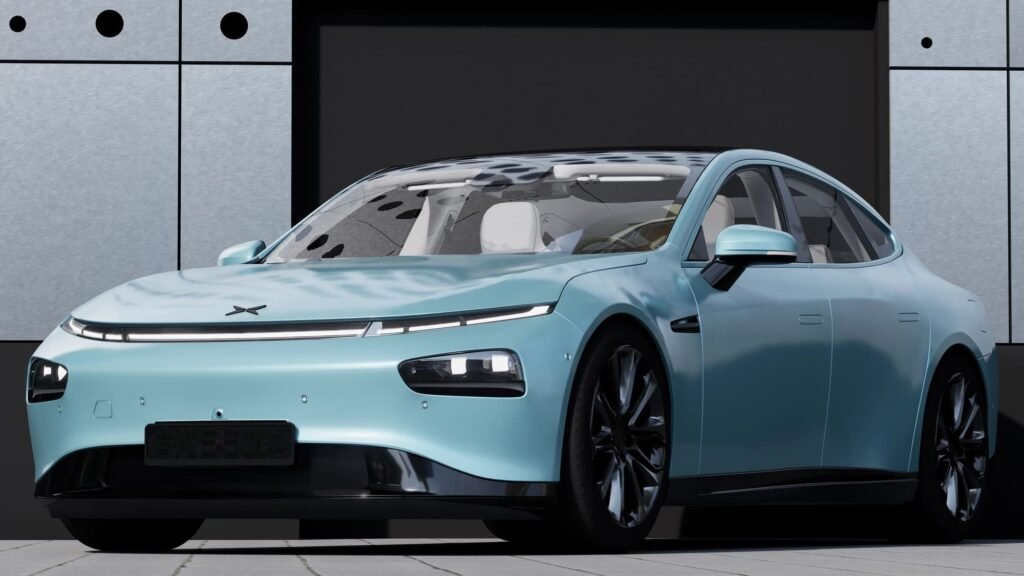
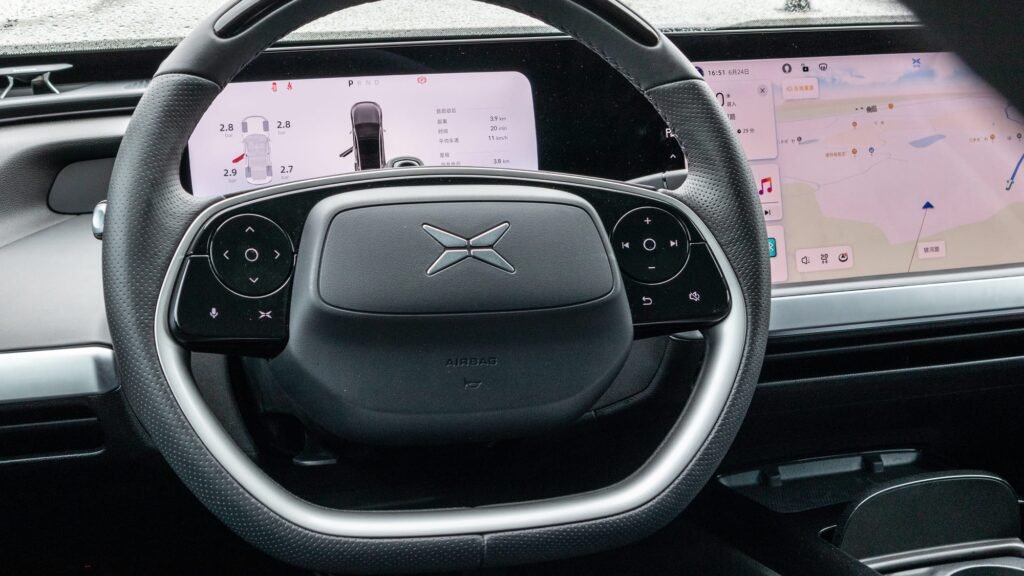
What exactly changed in the design approach? Three practical levers:
a) Proportions and silhouettes
EV platforms give a low, flat floor; designers exploited that to produce long hoods (or short front overhangs with full-width light bars), coupe-like roofs, and muscular shoulders. These cues read as premium because they echo expensive European models, but they’re also inherently modern.
b) Lighting language and surface treatment
Chinese startups invested heavily in “light signatures” — distinct LED bar motifs that can be changed across models with software and kits. This is an inexpensive way to create brand recognition and “premium” drama without entirely reengineering the body.
c) Interiors: screens, haptics and perceived quality
Interior fit and finish improved quickly thanks to better suppliers and bigger investments in foam, stitch patterns, and soft trims. But more importantly, the software layer (large central screens, overlaid graphics, ambient lighting and OTA updates) created a perceived premium experience that first-time buyers equate with luxury. NIO, for instance, competes on interior ambience and UX — often using hires from Europe and the U.S. to polish touchpoints.
Designers also learned the psychology of “value optics”: glass roofs, panoramic displays, ventilated seats, and B&O or other branded sound systems — features that impress in the showroom and in short ownership cycles.
Pricing, warranties and the value ladder: why many buyers choose style over resale
A central reason Chinese designs cut through is the package economics.
- Aggressive pricing: Scale, vertical integration and lower labor costs allowed Chinese OEMs to undercut rivals on sticker price. BYD grew to become the world’s largest EV seller in part by using that cost advantage. Reuters and InsideEVs both tracked BYD’s massive volume and export push.
- Feature density: Compared with legacy competitors, Chinese models frequently included heated/ventilated seats, panoramic roofs, Level-2 ADAS, and large battery packs as standard or low-cost options. That “more car for the money” proposition appeals especially to buyers who plan 3–5 year ownership cycles.
- Generous warranties: Many Chinese brands used long warranties to reduce perceived ownership risk. Long warranties are an inexpensive marketing lever compared with improving long-term durability across an entire supplier ecosystem.
- Shorter ownership horizons: In many buying markets (urban China, emerging markets, trendy buyers in Europe and the U.S.), consumers rotate cars faster. If you own for 2–4 years and trade in, flashy features and low purchase price beat a decades-long reliability record.
Put together, style + features + low price + long warranty form a value ladder that persuades buyers to trade lower expected resale for immediate ownership pleasure.
Examples of New Chinese Design Boldness
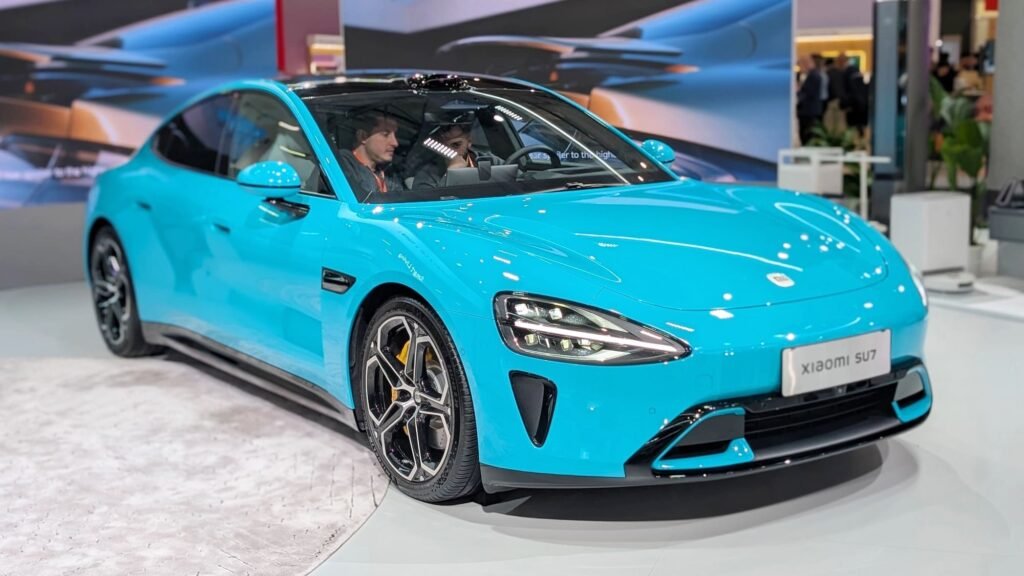
Xiaomi
Xiaomi is a big player in the smartphone game, but they’ve got some top car designers on board to jump into the car market. So far, they’ve rolled out two models called the SU7 and YU7. The SU7 caught some heat for looking a lot like the Porsche Taycan, and because of that, Xiaomi’s getting some pushback to stand out more.
BYD
BYD moved from batteries to cars and now dominates China’s EV market. Its e-platform and Blade battery are central technical differentiators; BYD also moved aggressively into Europe and other export markets. BYD’s scale allowed it to undercut global rivals on price while offering modern design and large battery packs. Reuters and BYD’s own releases document that rapid growth.
Geely
Geely didn’t just buy Volvo; it used Volvo’s engineering discipline to build credible premium cars and product platforms. Geely’s brands (Lynk & Co, Zeekr, Proton revival, Geely own brand) show how a Chinese group can operate different stylistic languages for different markets. Geely’s European investments and hiring are well-documented.
NIO
NIO carved a premium niche with large interior screens, unique battery-swap strategy and a brand-led ecosystem (member events, app engagement). NIO invested in European design talent and positioned its models as aspirational EVs with strong cabin UX. NIO’s design stories and recruitment are part of this narrative.
Xpeng and Li Auto
Xpeng emphasizes ADAS and automated drive features, hiring Western talent and showcasing advanced cockpit experiences. Li Auto focused on range-extender hybrids (and family practicality) with contemporary, feature-rich cabins.
Great Wall (Haval, Tank)
Great Wall’s Haval and Tank brands blend Toyota-like reliability aspirations with muscular styling aimed at aspirational buyers who want “big truck looks” for less cash.
Reliability, durability and resale: the empirical record so far
If you’ve been keeping up with our blog, you probably know we’ve covered reliability a lot, especially when it comes to Chinese brands. Here’s an article that dives a bit deeper into that topic. We want to remind you that the core issue is still there: Chinese cars are looking more and more premium and packed with tech, but the big questions about long-term reliability and resale value are still up in the air in many places. Let’s break it down a bit more.
What the data shows today:
- Safety and certification: Chinese cars now meet many international safety standards and some models score well in Euro NCAP and other tests, but broad, long-term reliability metrics (10+ years) are naturally sparse because many models are new and export volumes rose only recently. Reuters and investigative reporting show Chinese firms hitting safety targets while moving to local production in EU to avoid tariffs.
- Battery and drivetrain durability: BYD, CATL and other suppliers have greatly reduced battery fire risks and improved cell chemistry; CATL’s advances (Qilin, Shenxing, sodium-ion announcements) show an ecosystem dialling up reliability and fast charging. Yet battery degradation over a decade is still being studied in real-world fleets.
- Service networks and parts availability: Exports and dealer networks are growing, but established brands retain an edge in after-sales in many markets. That affects resale: buyers priced to assume stronger after-sales for Toyota and VW mean Chinese cars often have lower trade-in values outside China.
- Short-term consumer satisfaction: Many owners report high satisfaction in first 1–3 years — especially on tech and features — but some surveys and field reports note software glitches or early-life QC issues in specific models. The pattern: great showroom appeal but mixed long-term signals — exactly the tradeoff that attracts buyers prioritizing style and features.
How legacy OEMs reacted — and what it means
Western and Japanese automakers haven’t been idle. Their responses include:
- Localization: Building plants in Europe and other markets to match pricing and avoid tariffs (e.g., BYD building a Hungary plant). Reuters and other outlets reported European localization moves.
- Design and UX catch-up: Hiring software and design talent, combining hardware reliability with superior UX. Expect more cars with large integrated screens, over-the-air (OTA) updates, and subscription features from legacy OEMs.
- Strategic partnerships: Geely buying Volvo, creating a two-way technical exchange; Western OEMs partnering with Chinese software and component suppliers (batteries, chips) to maintain competitiveness.
For buyers this means a continuing blur: many non-Chinese brands will look more “Chinese” (in UX and features), and many Chinese brands will look more “European” (in fit, finish and safety). The victor is the company that combines design flair, software excellence and long-term durability.
What to watch next:
- Quality control at scale. Rapid expansion can lead to QC lapses if suppliers and plants scale faster than governance systems. Bloomberg’s reporting on “EV graveyards” illustrated the perils of subsidy-fueled booms and poor demand forecasting.
- Regulatory headwinds. Tariffs, content rules and scrutiny over software/security can raise costs in export markets. BYD’s adjustments to European strategy show this dynamic.
- Battery raw-materials volatility. CATL and BYD reduce dependence through tech, but raw material prices and geopolitics can stress margins.
Closing thought
The rise of Chinese car design is one of the coolest changes in the car industry this century. It hasn’t just been a straightforward journey from bad to good; instead, it’s been a smart strategy. They learn quickly, bring in top talent, take bold design risks, streamline production, and market their vehicles hard.
And they are also stepping it up with better durability and global support after you buy. Meanwhile, international older brands are definitely gonna try to copy the great value features that these Chinese brands offer especially considering how gigantic the Chinese car market has become. In the end, we’re gonna see a market that’s way more diverse. For those high-end buyers, stuff like brand reputation, warranty, and support from dealers will be super important. However, like we mentioned at the start, if you’re someone who’s more into budget-friendly options, care about style, tech, instant enjoyment, and plan to own for just a couple of years (2–4 years), the drop in resale might not be a big deal since the purchase price is lower and the features are pretty awesome.
But, if you’re someone who cares more about long-lasting durability and solid resale value, it’s best to stick with trusted brands that have a good track record (think Toyota, Lexus, or Honda). Or you could at least go for Chinese cars that come with strong local dealer support, long warranties, and certified used-car programs. Though this isn’t fully set up in the US yet, but in places like Russia, Australia, South Africa, and the Middle East, brands like Chery, BYD, GWM, and MG have some large dealer networks that work at different levels of efficiency. I’m really looking forward to seeing how these two worlds keep blending over the next ten years.
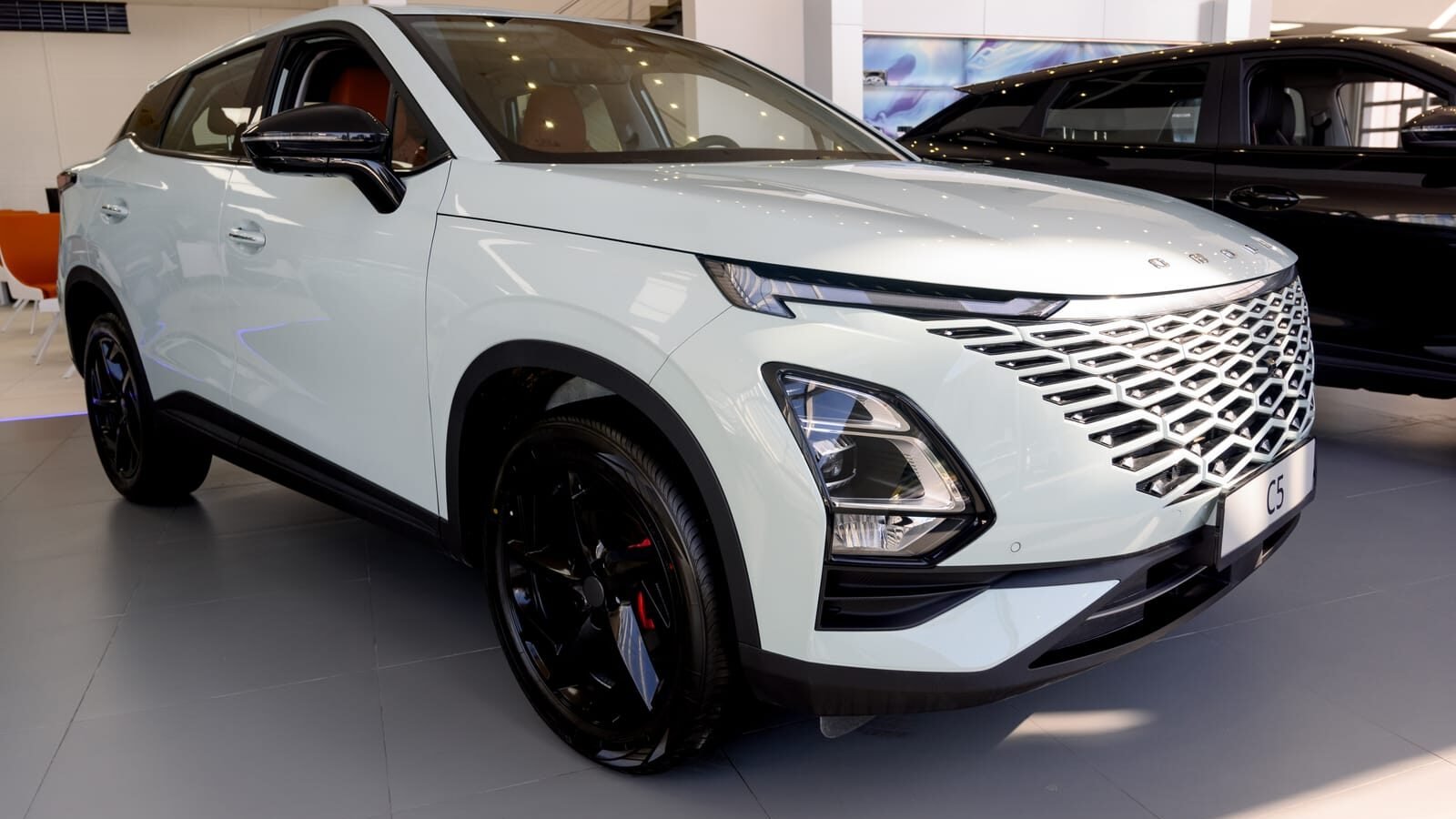
Take a look at our latest posts down below or feel free to swing by our homepage for more stuff.
Our latest posts…
- Affordable Trunk Organizers That Every Driver Needs in 2025

- Why Chinese Cars Now Win Buyers
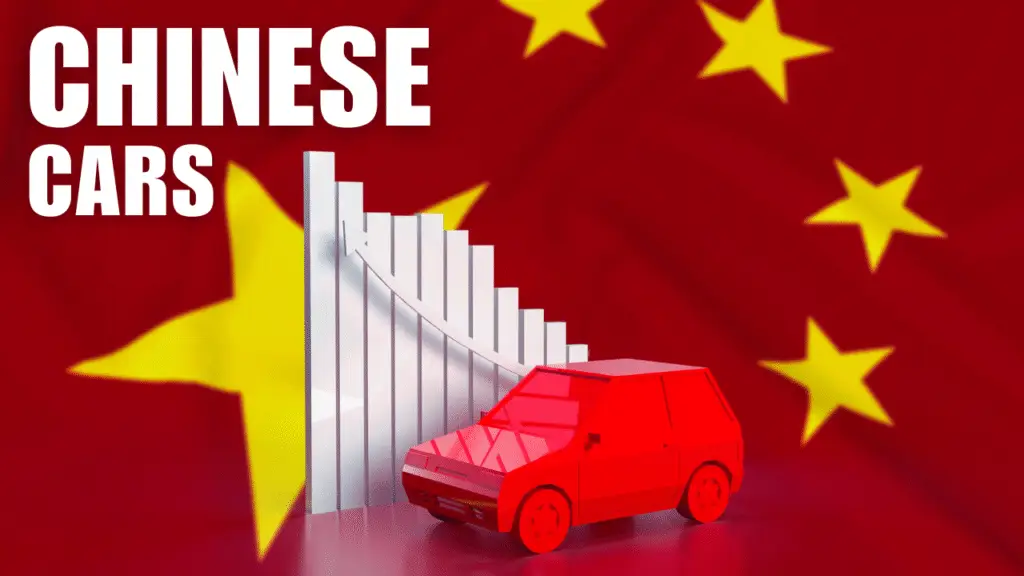
- Best Insulated Water Bottles for Long Drives in 2025
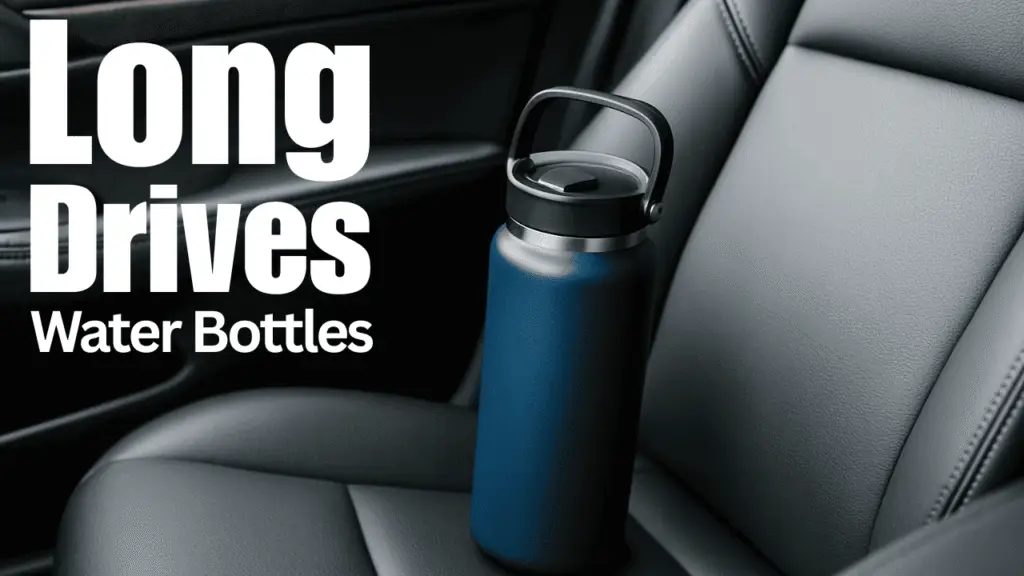
- Best Car Covers for All-Weather Protection (2025 Guide)

- Best Mini Rolling Mechanic Seats for Home Garages in 2025
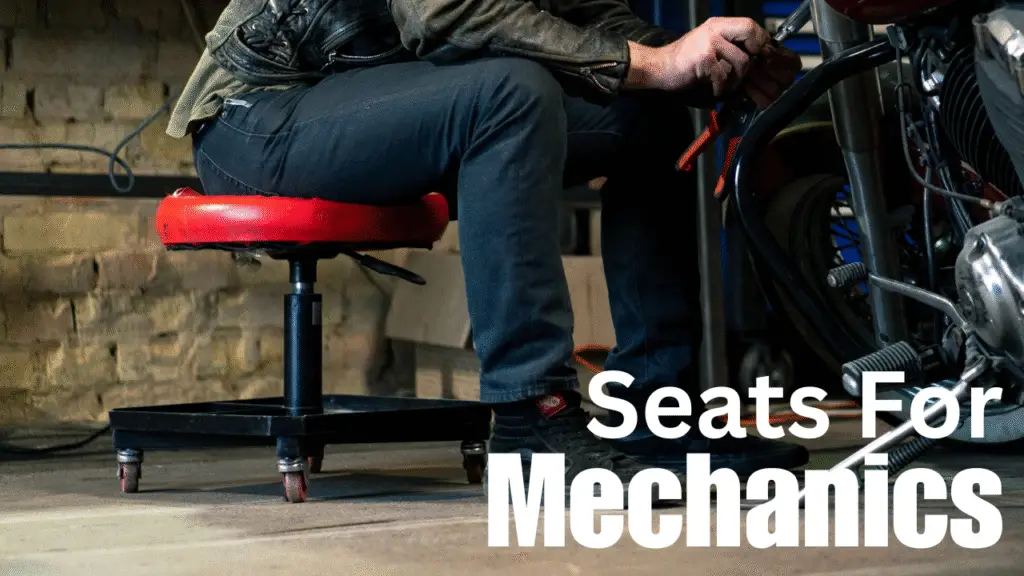
*Disclaimer: This website provides automotive content for informational purposes only and should not be considered professional advice. While we strive for accuracy, we do not guarantee the reliability or suitability of any vehicle or product mentioned—always conduct your own research before making purchasing decisions. Additionally, some links on this site are affiliate links, meaning we may earn a commission if you make a purchase, at no extra cost to you.

